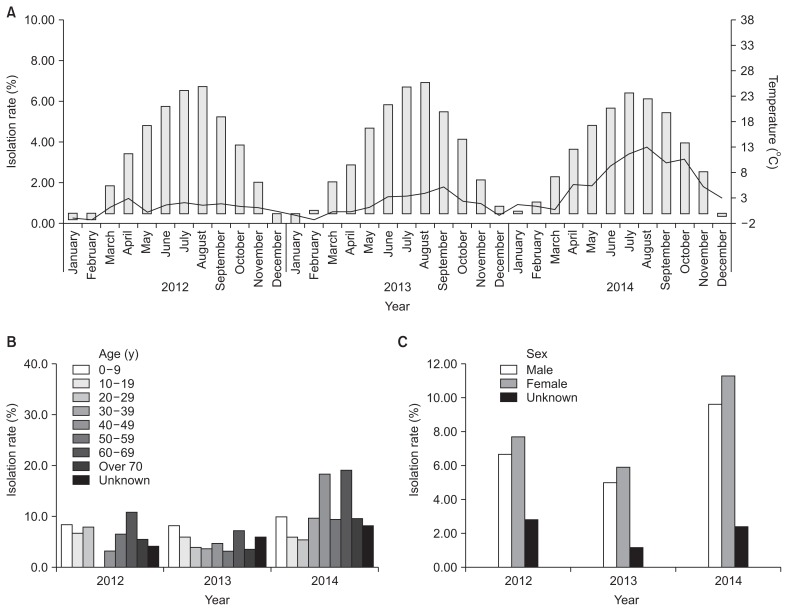Articles
- Page Path
- HOME > Osong Public Health Res Perspect > Volume 8(1); 2017 > Article
-
Original Article
Surveillance ofBacillus cereus Isolates in Korea from 2012 to 2014 - Su-Mi Jung, Nan-Ok Kim, Injun Cha, Hae-young Na, Gyung Tae Chung, Hyo Sun Kawk, Sahyun Hong
-
Osong Public Health and Research Perspectives 2017;8(1):71-77.
DOI: https://doi.org/10.24171/j.phrp.2017.8.1.10
Published online: February 28, 2017
Division of Enteric Diseases, Center for Infectious Diseases, National Research Institute of Health, Osong, Korea
- Corresponding author: Sahyun Hong, E-mail: strepto13@hotmail.com
Copyright © 2017 Korea Centers for Disease Control and Prevention
This is an open access article under the CC BY-NC-ND license (http://creativecommons.org/licenses/by-nc-nd/4.0/).
Figure & Data
References
Citations
Citations to this article as recorded by 

- Toxigenic diversity of Bacillus cereus isolated from fresh produce and effects of various factors on the growth and the cytotoxicity of B. cereus
Areum Han, Jae-Hyun Yoon, Yun-Sun Choi, Yujin Bong, Gyusuck Jung, Sung-Kwon Moon, Sun-Young Lee
Food Science and Biotechnology.2024; 33(1): 219. CrossRef - A study on toxin genes and cytotoxicity levels of Bacillus cereus in various ready-to-eat foods and pastry products in Turkey
Başak Gökçe ÇÖL, Harun AKSU
Journal of Istanbul Veterinary Sciences.2022; 6(3): 152. CrossRef - Autoinducer-2 Could Affect Biofilm Formation by Food-Derived Bacillus cereus
Nari Lee, Myo-Deok Kim, Min-Cheol Lim
Indian Journal of Microbiology.2021; 61(1): 66. CrossRef - Effects of Low-Temperature Drying with Intermittent Gaseous Chlorine Dioxide Treatment on Texture and Shelf-Life of Rice Cakes
Timilehin Martins Oyinloye, Won Byong Yoon
Processes.2020; 8(3): 375. CrossRef



 PubReader
PubReader Cite
Cite
